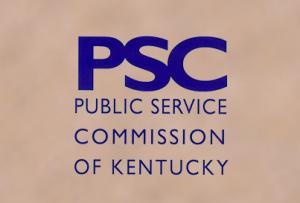Rate Case Roundup: Kentucky

On a single day, the Kentucky Public Service Commission released a pair of decisions addressing new revenue levels for two sister energy utilities, Kentucky Utilities Company (KU) and Louisville Gas & Electric Company (LG&E). The two utilities had prosecuted their cases together, with each case being resolved by substantially similar settlements.
Kentucky Utilities had petitioned for $103.1 million in rate relief, based in part on a recommended ROE of 10.23%. The rate application filed by LG&E relied on the same 10.23% ROE value, but requested just $93.6 million in additional electric revenues. It sought an increase of $13.8 million in its natural gas revenue requirement.
The settlements eventually negotiated in the cases set forth a 9.75% ROE for each utility. The stipulations incorporated a rate increase of $54.9 million for KU and of $59.4 million for LG&E's electric operations. As to the natural gas side of LG&E's services, the rate agreement provided for an increase of $7.5 million.
The commission, however, was not completely receptive to the settlement terms. It ordered certain modifications, including a slight reduction in the authorized ROE from 9.75% to 9.70%. It also lowered the amount of rate relief afforded the companies in the stipulations.
As finally calculated by the commission, KU may raise its rates by $50.5 million, or about 3.1%. The increase in electric rates for LG&E was set at $56.3 million, a rise of around 5%. The company's natural gas revenues were allowed to climb by $6.5 million, an increase of approximately 2%.
In explaining the changes it made to the settlement terms, the commission said that it was persuaded by data on utility ROEs both nationwide and regionally that the proffered 9.75% was a little too high to be justified. Observing that the average ROE for energy utilities was currently 9.6%, and pointing to nominal improvement in Kentucky's own economic environment, the commission concluded that a slight reduction to a level of 9.70% was called for.
Another factor in the commission's decision to decrease the amount awarded to the utilities related to their post-employment benefits plans. The commission disallowed from rates those company contributions to certain pension and other retirement savings plans for those managerial and executive personnel who were already participating in other utilitysponsored pension plans. The commission elaborated that ratepayers should not have to pay for defined benefits packages provided to longtime employees while simultaneously shouldering the costs of the companies' matching contributions to those employees' 401(k) plans.
The commission noted that the utilities' rate requests had focused on their plans for renovating the McAlpine Dam, a hydropower facility in Louisville. A second major component of their rate proposals related to an advanced meter system (AMS) initiative and an associated distribution automation (DA) project. Kentucky Utilities had pegged total AMS costs at $138.8 million, while LG&E estimated its AMS costs for both electric and natural gas operations would come to $174 million. The DA component was projected to require a further $112 million for the two companies combined.
The AMS and DA proposals proved to be quite controversial, however. The commission related that although KU and LG&E continued to claim that the deployment of smart meters would enhance operational efficiency and promote conservation and demand response, leading to affirmative cost savings and consumer benefits, they had agreed to withdraw their plans at the present time and enter into a collaborative with other stakeholders to further analyze the cost-effectiveness of AMS and DA technologies.
With regard to rate design, the commission said that the settlements contemplate establishment of a new rate schedule specific to sports field lighting. A pilot program was instituted thereto, through which to study usage patterns of such facilities.
The commission reported that the parties also stipulated to increases in all monthly customer charges. However, to help offset the impact of such increases, the low-income assistance surcharge added to the bills of residential customers was raised from 25 cents per month to 30 cents per month for KU.
Another measure specific to KU pertained to a future loss of load. The commission explained that nine cities which have long secured their wholesale supply from KU have given the utility notice that they will no longer do so as of April 2019. Expressing concern about such a significant loss of load and revenue, the commission tasked KU with developing a plan for dealing with that loss, as through identification of new markets for its power. Re Kentucky Utilities Co., Case No. 2016-00370, June 22, 2017 (Ky.P.S.C.); Re Louisville Gas & Electric Co., Case No. 2016-00371, June 22, 2017 (Ky.P.S.C.).



